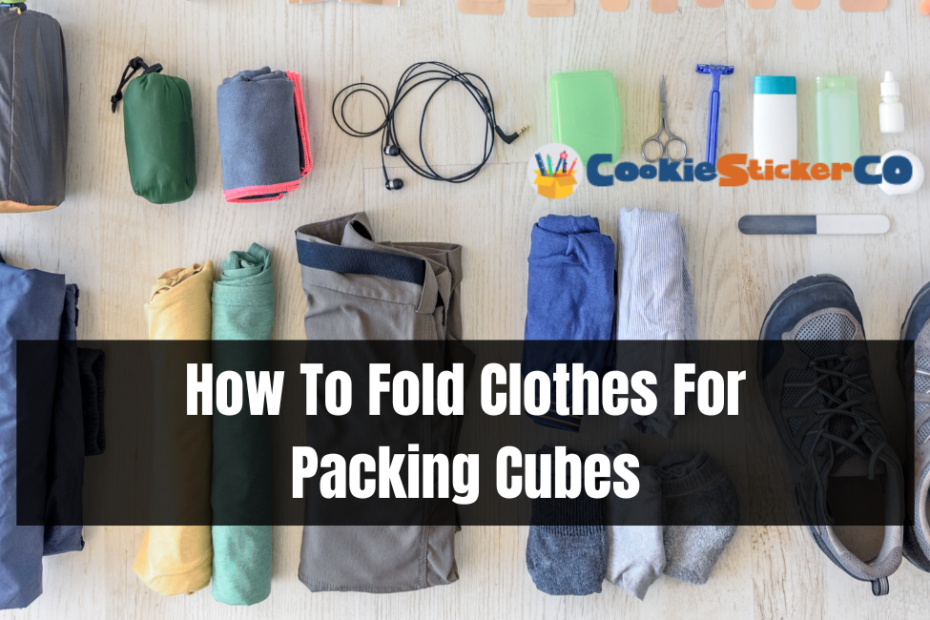When it comes to efficient packing for travel, packing cubes are a game-changer. These nifty organizers allow you to maximize your luggage space, keep your clothes wrinkle-free, and easily find what you need without creating chaos in your suitcase.
In this comprehensive guide, we will walk you through the art of folding clothes for packing cubes like a pro. Whether you’re an avid traveler or a first-timer, mastering this technique will revolutionize the way you pack and ensure you make the most of your travel adventures.
Why Packing Cubes Matter
Before diving into the folding techniques, let’s briefly explore why packing cubes are a crucial tool for travelers. Packing cubes are lightweight and durable containers designed to keep your clothes neatly organized within your luggage. They come in various sizes and colors, allowing you to categorize your items and identify them easily.
Benefits of Using Packing Cubes:
- Maximize Space: Packing cubes compress your clothes, creating more room in your suitcase. This is especially beneficial if you’re traveling with a carry-on or a small bag.
- Easy Organization: With packing cubes, you can sort your clothes by type, outfit, or destination. This means no more rummaging through your luggage to find a specific item.
- Wrinkle Prevention: Properly folded clothes in packing cubes result in fewer wrinkles, so you can arrive at your destination looking fresh and stylish.
- Versatile and Multipurpose: Packing cubes aren’t just for clothes. You can use them to store accessories, toiletries, and electronics, keeping all your travel essentials in one place.
Now that you understand the value of packing cubes, let’s delve into the step-by-step process of folding clothes to fit perfectly inside these organizers.
Step 1: Gather Your Supplies
To start this clothing folding journey, gather the necessary supplies: packing cubes in various sizes, the clothes you plan to pack, and a flat surface like a table or bed.
Step 2: Sorting and Grouping
Begin by sorting your clothes into different categories. Group similar items together, such as shirts with shirts, pants with pants, and undergarments with undergarments. This preliminary organization will make the packing process smoother and more efficient.
Step 3: The KonMari Method for Folding
To achieve the best results with your packing cubes, consider using the KonMari folding method. Made famous by Marie Kondo, this technique involves folding clothes into compact, space-saving rectangles.
- T-Shirts and Tops:
- Lay the t-shirt flat on the surface, front-side down.
- Fold one side of the shirt towards the center.
- Fold the sleeve on the folded side, creating a rectangle.
- Repeat the same fold on the other side.
- Fold the bottom of the shirt up to create a compact rectangle.
- Pants and Bottoms:
- Lay the pants flat on the surface, with the legs together.
- Fold the pants in half lengthwise.
- Fold them in half once more, creating a long rectangle.
- Undergarments and Socks:
- Fold socks into each other to prevent them from getting lost.
- Fold underwear and smaller items into compact rectangles.
The KonMari method not only saves space but also allows you to see all your clothes at a glance, making it easy to choose your outfits without unpacking everything.
Step 4: Packing Cubes Placement
Now that your clothes are neatly folded, it’s time to place them inside the packing cubes. Begin with the larger items at the bottom and the smaller ones on top. Consider using separate cubes for different types of clothes or for each day of your trip.
Step 5: Compression and Filling
After placing the clothes in the packing cubes, it’s time to compress them. Most packing cubes have compression zippers that allow you to squeeze out excess air, making the cube more compact. This step is especially useful for creating extra space in your suitcase.
While filling the packing cubes, leave some room at the top to allow for expansion once you close the zipper. Avoid overstuffing the cubes, as it may cause wrinkles and make it difficult to close them.
Step 6: Labeling and Identifying
To make unpacking a breeze, consider labeling your packing cubes. You can use tags, colored ribbons, or simply write on the cube with a fabric marker. This way, you’ll quickly know which cube contains what, saving time and reducing frustration during your trip.
Conclusion
Congratulations! You’ve now mastered the art of folding clothes for packing cubes like a pro. With these packing techniques, you’ll be amazed at how much more you can fit in your luggage, how organized your clothes will be, and how much easier it is to travel stress-free. Packing cubes truly are a travel essential, and when combined with the KonMari folding method, they become an unbeatable duo for every adventurer.
So, the next time you embark on a journey, follow these steps and let the packing cubes work their magic. Happy travels and happy folding!
Read more: How to Store Toiletries in a Small Bathroom
